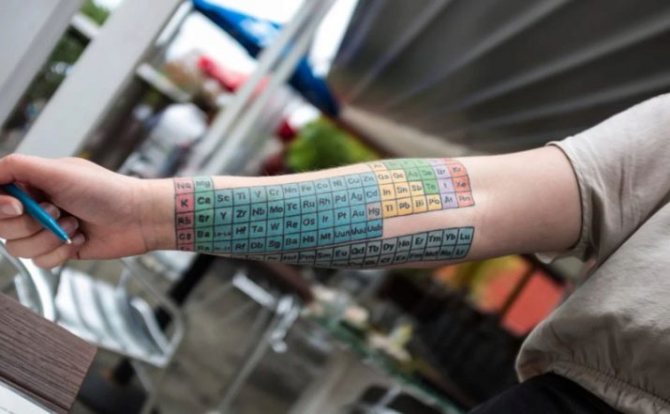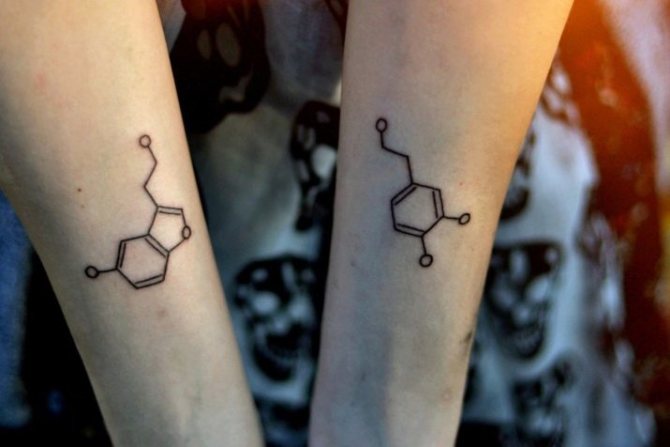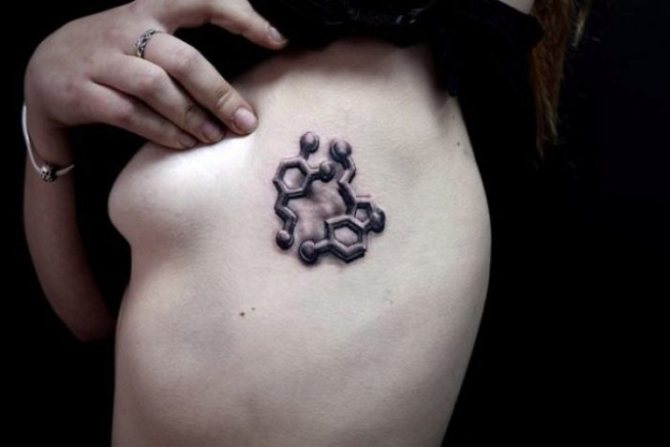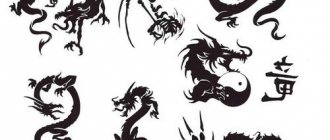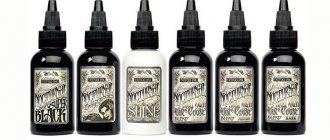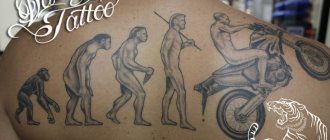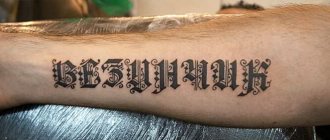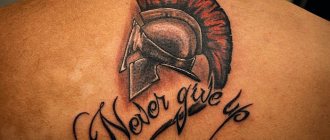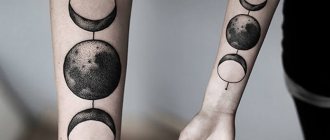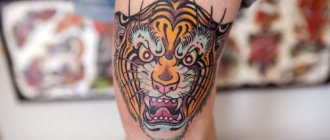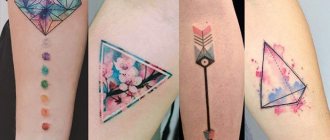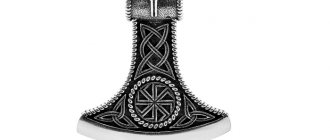To confuse the mind with a complex question, then it would definitely be a chemical equation. Instead of trying to solve the equation, it would be fun to tattoo them, which is what the creative designers had in mind. This new way of portraying science in an artistic way would appeal to any young person.
The best and amazing chemistry tattoos with images:
Let's take a look at the best 9 chemistry tattoos that can be made from world famous ideas unknown chemistry tattoos !!!
1. Small chemical chemical beaker and dna tattoo design:
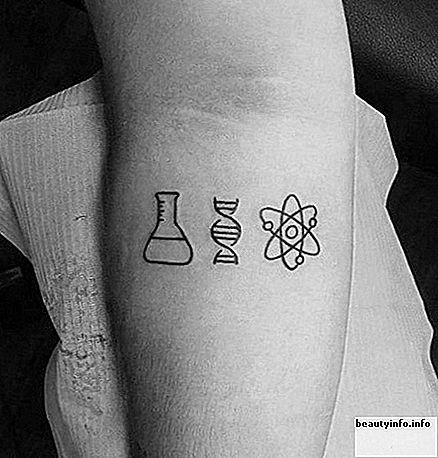
The beaker is a standard tool used in all chemical laboratories to highlight the fact that designers used beakers as the standard chemical tattoo design. Not only the beaker, but also the DNA that makes the human body together as a tattoo on the arm or leg.
2. adrenaline Chemical reference tattoo design:
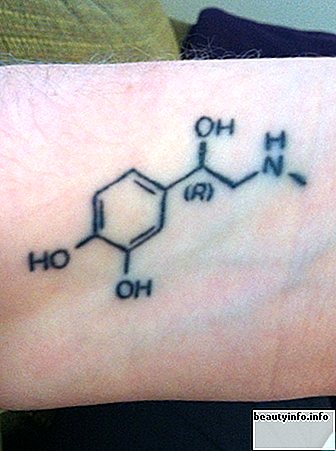

Adrenaline, which is called "Flight," a chemical molecule of fright that gives the symptom of adrenaline that makes a person be active. This chemical compound is designed as a tattoo using its chemical formula as the base.
3. Nitrogen Fixation Tattoo Design:
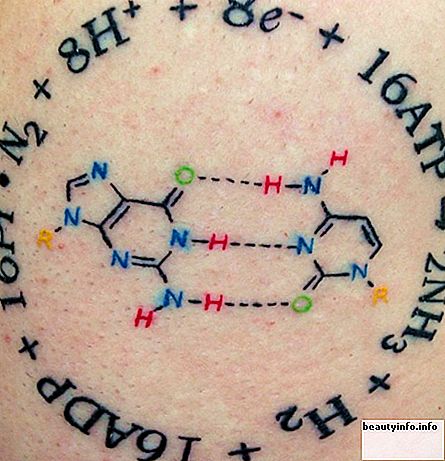

Nitrogen is an important chemical compound used in many chemical experiments, as well as a biocompound for any medical anesthetic. This nitrogen fixation is one of the important chemical reactions that plants need, which is accomplished by converting nitrogen into ammonia. This type of chemistry tattoo is mainly worn by chemistry enthusiasts.
4. Periodic Element Chemical Tattoos:
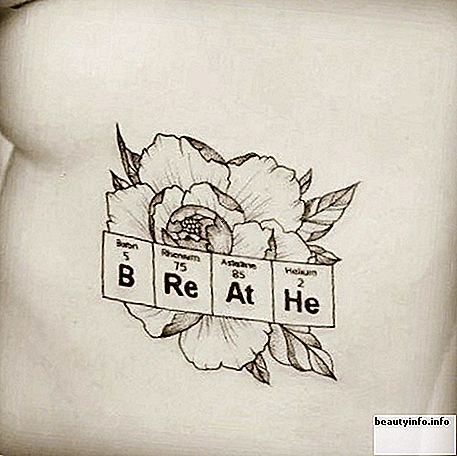

The periodic elements are those important chemical elements seen in our atmosphere that all chemists know by heart. For those who like one or more of the elements, like to put them into their bodies, which many chemists consider sacred
5. Dopamine Chemical Structure Tattoo Design:
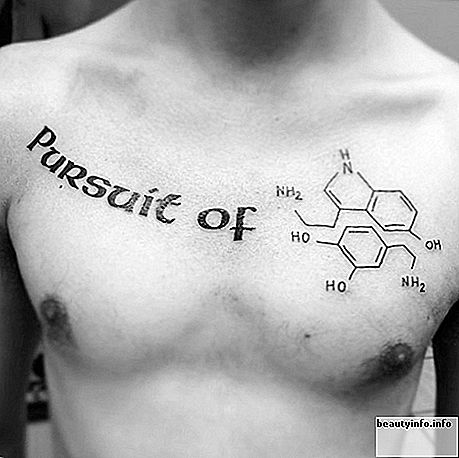

Happiness creates a chemical compound that is present in few herbal plants, this, when consumed, creates a hallucination and a joyful mood. This chemical structure is specifically designed by guys as a biochemical tattoo around the arm or leg.
6. Designer Chemical Formula Tattoo Design:
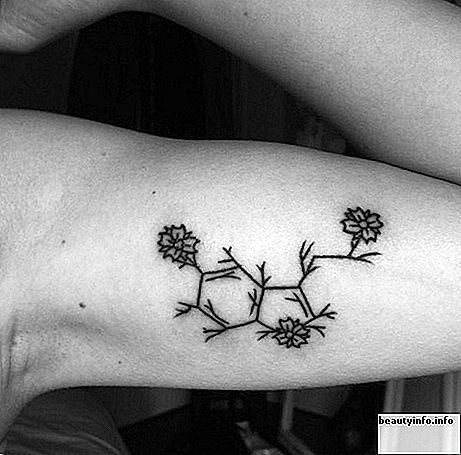

Instead of the usual tattoo with just a chemical structure representing a line and geometric figures, a different style is created by drawing several Mendi patterns inside a chemical formula, which is certainly of great importance.
7. A colorful full tattoo of the periodic table:
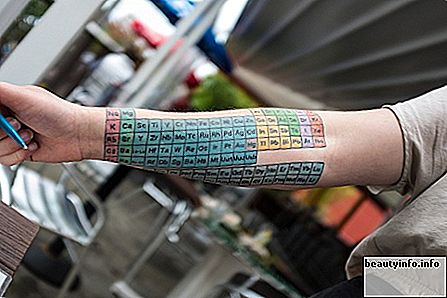

For diehard chemistry buffs, this ink tattoo design may be the best option when they visit a tattoo store. This biochemical tattoo with 103 elements definitely takes time, but patience gives good results!
8. Chemical Formula Tattoo Design:
By achieving a simple but meaningful chemical tattoo design, you can create this chemical tattoo formula. This tattoo design is a very simple alphabetical design that is designed using a chemical formula as the theme.
9. Chain Reaction Chemistry Tattoo Designs:
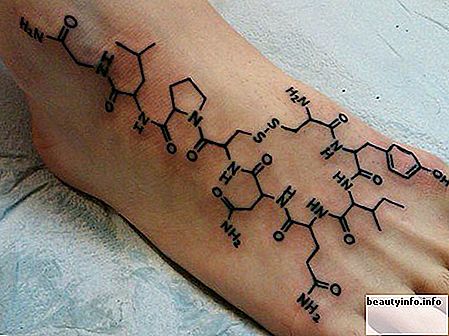

The word "chemistry" itself makes us think of these huge chain reaction equations, which is one reason why many people are afraid to take chemistry as a major subject, but there are also people who just love to deduce just the equation of a long chain reaction, for them it is really a pleasure.
Chemistry is definitely necessary for couples who express love, but for people who are in love with the subject, chemistry can only be demonstrated by having a chemical tattoo design and spreading chemical forums to others who help others learn about the unknown.
Image source: 1, 2, 3, 4, 5, 6, 7, 8, 9.
Scientific tattoos - From the world by a thread
If the person possessing original taste and not subject to trends of fashion, well or simply geek, wants to make to itself a tattoo, it hardly will suit standard "color and composition decisions" - flowers, hearts, an ornament, monsters, a photo or names of favourite... The alternative - original and even in something useful choice can become the tattoos representing mathematical formulas, postulates of physics, chemical reactions and not only.
A tattoo today is first of all means of self-expression with the help of which it is possible to underline the individuality, to emphasize the advantages of a figure, and sometimes even to designate a vital position, as, for example, activists of movement Greenpeace made as a protest against killing of whales.
So, let's say you decided on a tattoo, but then there is a question in the choice of sketches - of course, if you are a man, not subject to herd instinct, and the standard ornaments, characters, cats, roses and soaring asses with wings on the tailbone you do not suit (otherwise go straight to the salon - there sketches such good enough). Perhaps you'll go for inspiration on the Internet, and, bouncing from link to link (and any user of the global network knows how one starts looking for material on the topic of nuclear reactions, eventually opening the video "drunken traffic cop at a countryside disco"), you will come across a photo of scientific tattoos - hard facts in numbers and formulas are "printed" on your skin. And there can be plenty of them - the entire range of school and college textbooks is at your service.
Naturally, tattoos featuring the tenets of various technical disciplines predominate. That's right - what would a tattooed passage from Tolstoy's War and Peace or Kant's Critique of Pure Reason look like, for example?
There are several large groups that can be distinguished among them. So:
The very, very diverse: from the innocuous constant 2^5, to systems of differential equations of higher orders. Presented in the full range: physical formulas, electrical circuit diagrams, Schrodinger's dead-living cats, Feynman diagrams, and more. Models of DNA, human evolution, Mendeleev's table, chemical formulas, all sorts of syntheses and the structure of some protozoa. Strange as it may seem, programmers are noticeably behind all the above-mentioned castes of scientists. Proger tattoos are not so much, mostly depicting the emblem of the operating system or programming language, but still you can find the text of the "blue screen of death" and the text of the program known to all plusoviks "Hello, World!"
WHAT A TATTOO MEANS
Just a couple of decades ago, a tattoo was a sign of membership in a particular culture or subculture. Nowadays, tattoos, piercings and scarring have become ubiquitous as a tribute to fashion. Most tattoos no longer have a hidden meaning. For example, the hero of a favorite comic book tattooed on a teenager's skin today means only a liking for the character in question.
However, if you're the kind of person who gets meaningful tattoos, you need to be delicate in your choice of characters. Especially suggestible people with a new tattoo even have a change in attitude towards life.
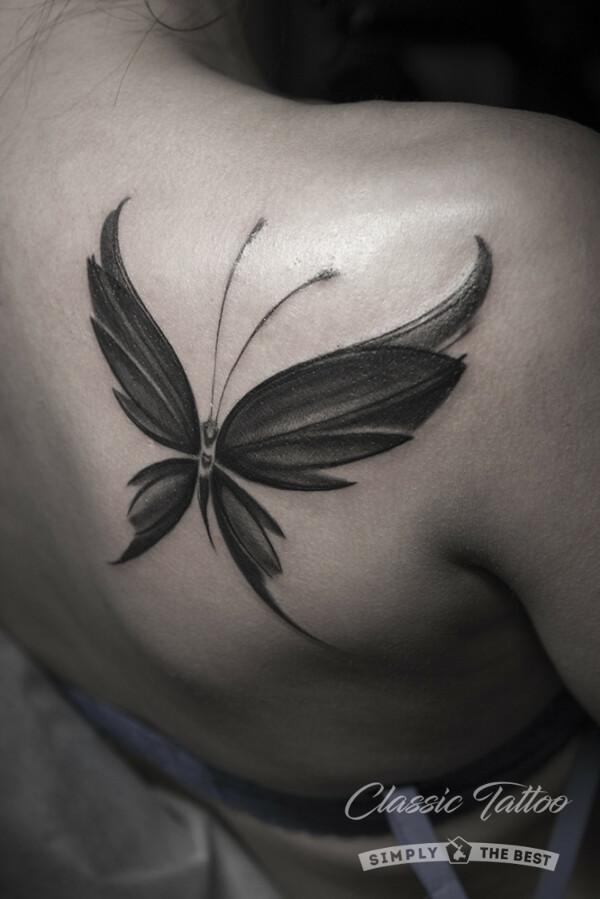

For example, a butterfly has a generally positive meaning. It is the embodiment of life, rebirth. A butterfly is a symbol of hope and faith in the future, as well as a good marriage (if the moths are depicted in a couple). The place on the body where the tattoo is made is decisive. Psychologists say that the moth on the hip or lower back means low self-esteem of the owner.
Not in vain they say that the tattoo master is partly a psychologist. The professional tattooist can even refuse to put on a tattoo, if he sees insecurity in the eyes of the client. At the same time, the specialist will help the client to choose such a symbol, which will raise his faith in himself and give aesthetic pleasure.
Tattoo of love. The meaning of the tattoo of love. Sketches and photos of love tattoos
"If you're going to love someone, learn to forgive first." Some quote Alexander Vampilov's phrase, while others write ... on their bodies.
The Irkutsk playwright's line has become a popular subject for tattoo about love.
The meaning of the phrase is deep and clear, which cannot be said about a number of other tattoos devoted to love. Let's try to figure out the secret meanings.
The meaning of a tattoo of love
Raz tattoo is about loveSo, the meaning of the picture is associated with it. It seems that everything is simple. But, there is an opportunity to understand, for example, the nature of love.
Here it is worth to study a number of symbols. Thus, in the image, dedicated to feelings, can be "inscribed" an anchor.
It is a symbol of stability and safe harbor, even if there is a "storm raging" around. Anchor indicates that the choice is unambiguous, and the vector of feelings is aimed at constancy, family hearth.
Another symbol of love - a tattoo in the form of a heart. Here, the details are worthy of attention. Inside the image can be embedded additions, for example, the sign of the pacifika.
A kind of upside-down trident - the international emblem of peace and disarmament, an anti-war symbol.
It turns out, by applying the hearts with pacifika on their bodies, lovers emphasize that fighting is not their format of the relationship, or that they are trying to get away from this format.
Tattoo of love photowhich often display the symbol of the inverted figure of eight. It is known as the sign of infinity.
However, in symbolism and heraldry, the figure of eight also represents the world as a whole. The sign associated with the eight sides of the world, four of which are the main, and the four intermediate.
At the same time, the figure of eight is a symbol of the eight winds associated with the concept of universality.
So, going into the philosophy, the tattoo of love with the sign of infinity speaks of its all-encompassing nature.
It is not just feelings for a person, but also tenderness for the world, the universe that gave birth to it.
Less philosophical tattoos with puzzles. This is a modern symbol of love. By tattooing a puzzle, a person hints that somewhere there is at least one more matching it.
If you draw a detail to which two, three, or four elements should dock, you get a hint of multilove in relation to a woman.
However, such a tattoo can also be an expression of feelings for relatives. Perhaps the remaining puzzles are "distributed" to parents, brothers, sisters and children.
"The tattoo is the very real branding and enslavement."
About the unattractiveness for men of tattoos on the female body, the underlying reasons for the ban on tattoos in traditional religions, the consequences of the tattoo boom for Russia and the world tells the Caucasus Geopolitical Club Orthodox philosopher, head of the intellectual club "Catechon", teacher of philosophy at the State Academic University of the Humanities, member of the Synodal Bible and Theological Commission and the Intergroup presence of the Russian Orthodox Church Arkady Mahler.
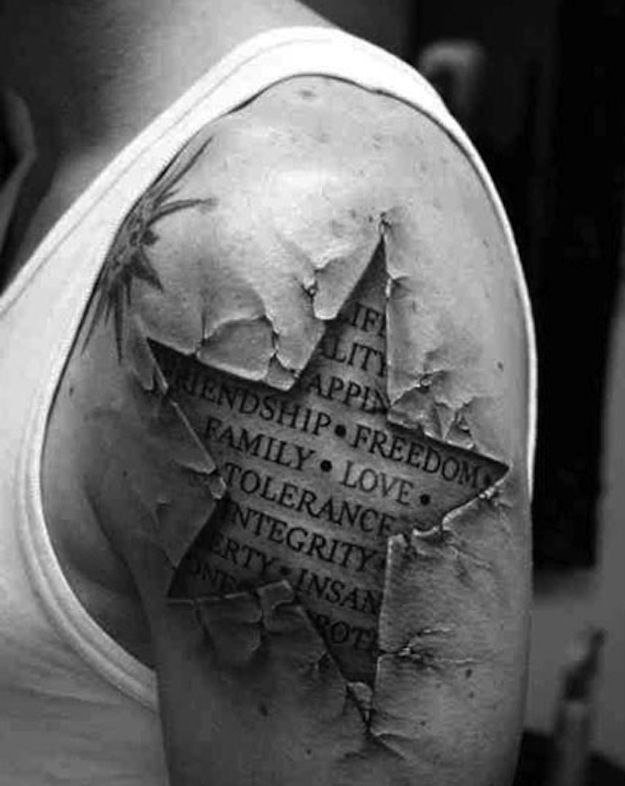

- Dear Arkady, This summer in Moscow (and not only) there has been a real boom in tattoos. Obviously, this painful and expensive "fashion" is not just a fashion. What processes is it the manifestation of? To what extent is the current popularity of tattoos in Russia a reflection of the worldwide trend that the authors of "Microtendencies" wrote about as far back as ten years ago[1]?
- Yes, I have noticed it in recent years, and especially in the West, where sometimes, looking at the people around me, it seemed to me that I was the only person without tattoos - they are drawn everywhere, and I do not remember a single case in my life when it was even pleasant to the eye. Of course, the growing popularity of tattoos in Russia is part of a Western trend - it's one of the many components of post-modern culture that has now arrived in Russia. It is a Western trend, not a global trend, because the fascination for tattoos, which is more characteristic of East Asian cultures and archaic tribes, has become popular all over the world through a Western intermediary. It was when Western culture embraced and legitimized the craze that it spread around the world.
- An important component of this boom is the explosive growth of female tattoos. And girls seem to be indifferent to the opinion of men, who are, to put it mildly, unflattering in their impressions of the tattooed female gender. How can this be explained? A woman, despising a man's opinion, consciously refuses to try to arrange her fate according to the traditional scenario...?
- If not to speak about the exceptions confirming the rules, in most cases girls get tattoos to give a signal to men - "I am exactly such and accept me so, here with this drawing, which always with me". Everything else - this is a clarification: what kind of picture is meant, where she got it, under what circumstances decided to make it. And here it all depends on the man, how much it will matter to him. I do not know any man who likes tattoos, but what I have seen lately is, of course, blatant ugliness, on a particularly large scale and obviously for the public.
I do not know a single man who would have liked tattoos on a woman's body. Girls are fatally mistaken if they think their tattoos are even remotely attractive to the men around them. But of course not only women are to blame for this vice, but also men - if men allow themselves to paint their bodies, dress provocatively, have a sloppy look, etc., why shouldn't a woman allow herself that? If such a woman is surrounded by richly tattooed men, as it happens in various subcultures, then she needs to be exceptionally self-sufficient not to become a reflection of these men, and if her friends do the same, even more so.
- If we listen to the girls themselves, we can identify several main motives for tattooing. Some do it for "self-expression" (though what exactly they are trying to express in this way is rather difficult to understand). Others claim that they "have the right" to do whatever they want with their bodies (some use the famous slogan "My body is my business!", which is often used to "justify" abortions, or the mythology of body positivity), and their tattoos supposedly have no meaning except "adornment. How true are these explanations? Isn't the main reason behind the passion for tattoos an orientation toward the external environment, where the tattoo as an element of ostentatious "independence" in reality serves as a marker of increased suggestibility, "herd mentality" and the accompanying suppressed until the time of aggression?
- When we make any kind of ethical or aesthetic assessment, we need to be aware of the worldview from which we are doing this, or at least from which worldview paradigm. What kind of value system allows us to call one object good and another bad, one beautiful and another ugly?
The notion that it is unacceptable to paint one's body is rooted precisely in the Old Testament religion, and therefore in Christianity and, more broadly, in all Abrahamic religions. In the Bible, in the book of Leviticus, God explicitly gives such a prohibition: "For the sake of the deceased, do not make any markings on your body and do not tattoo any writing on yourself" (Lev 19:28). And the book of Deuteronomy repeats this injunction: "You sons of the LORD your God, you shall not make cuts on your body, and you shall not cut out any hair over your eyes after you have died" (Deuteronomy 14:1). There are many cases where people in a special mental state, experiencing the death of a loved one or some other severe problem, mutilate or cripple their bodies, and skin cuts or tattoos are the most common. In this injunction the Lord reminds people that they are His children and it is not acceptable, while remaining faithful to God, to despair at the loss of anyone.
Some might say that this commandment refers specifically to the dashes and writings people do in connection with the death of someone, but that is not true, because the death of someone is only an occasion, and the point is that man in general and his body in particular is God's property, man does not belong to himself, and only God can set the rules for intrusion into that body. It is no accident that for the ancient Jews circumcision was a sign of the Covenant with God, and any other invasion of the body was perceived as treason against God, especially since pagan cults very often demanded it.
In general, the practice of tattooing was originally, of course, precisely a pagan tradition. By placing a certain tattoo on a person's body, the pagans fixed their eternal allegiance to a certain idol and bonded them to a certain social status - after all, a tattoo is done forever, it cannot be washed off, it is not a translated picture. Subsequently this pagan practice was used by various subcultures, including the criminal world or the world of some countercultural movements that made themselves known during the student revolution of 1968.
And what is very interesting is that all these subcultures like to pride themselves on their supposedly infinite freedom, primarily from the larger normative society in which they live and from which they defend themselves in their environment. But in fact, within these environments themselves there is a very clear and rigid hierarchy, as in many sects, and the tattoos received there are indelible stigmas of a certain hierarchical position, that is all like the archaic pagans. So, of course, there is nothing individual and unique about the practice of tattooing. It is the very real branding and enslavement, and at best it is simply an unfortunate stupidity committed in youth, but already incorrigible.
- A notable trend in both male and female tattooing is the dramatic increase in scary tattoos with overtly demonic[2] or "biomechanical"[3] content. An analysis of women's tattoo reports on review sites shows that the number of those "tattooing" a grinning devil, a girl with a half-dead face or a large flower with worms and snakes instead of stamens and pistils reaches nearly half. Constantly observing these nightmares on one's own body is strange, to say the least[4]. What changes in the collective consciousness are evidenced by the proliferation of mystical tattoos with an overtly hellish bias? Demons among us? Are fellow citizens raised in Orthodox (Muslim) culture consciously renouncing this part of their identity by swearing allegiance to the demonic world? Or unconsciously? Do people realize what they are doing?
- If we answer this question in a strictly secular and scientific way, then we can say that since tattoos are particularly popular in the countercultural youth milieu, rebelling against classical European ethics and aesthetics, the most ugly and frightening, infernal images are cultivated there, and since most tattoos on young people today have countercultural origins, the images are corresponding.
If we go deeper, we can recall that the tradition of tattooing has a pagan origin, now most prominent in East Asian countries, and therefore many tattoos resemble zoomorphic and anthropomorphic gods of the respective cults. But from a Christian perspective, the true origin of this visual series is quite obvious-it is, of course, the influence of demons, that is, fallen angels, who have become not only infinitely evil but also extremely ugly.
To the atheist mind this may sound both anti-scientific and ridiculous, but if we are really Christians we know that the ultimate source of all evil is the fallen cherubim and the host of other angels who have fallen with him, who are called demons. And behind any evil that ever happens anywhere is always traced their will - somewhere more visibly and somewhere less visibly.
And when the man himself openly goes towards them, openly begins to feel attracted to any destruction, any perversion, then they do not make themselves wait and leave a clear trace of their presence. For Christians, all of this is true and all of it is very serious. So a straight question is a straight answer. But of course, this does not mean that once a person has branded his body with an image, he has branded his soul forever: if a person has been baptized and sincerely repented of this sin, this brand will simply remain an annoying picture, and to reproach a person with it and in any way infringe his rights in connection with it is inadmissible.
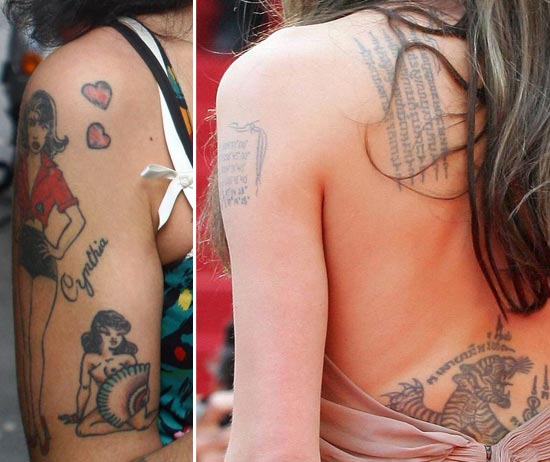

- Psychiatrists directly link tattoos to various mental illnesses[5]. According to Novosibirsk doctors' data borderline personality disorder is diagnosed in 78% of tattooed people. The subjects of the tattoos of people with BPD often reflect the theme of death (crosses, skulls, etc.)[6]. The association of tattoos with self-harm - a kind of self-destruction - is also commonplace for specialists[7]. Doesn't the growing number of tattooed people testify to the deep dysfunction of our society, to the unreflective psychosis and passion for self-destruction that engulfs it? What are the political and other implications of this?
- We now live in an extremely complex society from all points of view. We are experiencing an era in which, in different proportions, three historical origins combine - traditional, modern, and postmodern. Therefore, it is more than difficult to talk about society as a whole now. But we can talk about the dominant trends, the main of which is a protracted crisis of the classical Modern, its values, its principles and its institutions. I draw your attention to the fact that the majority of older generations in our country have a generally negative attitude towards tattoos, as do you and I. Why is that? Did they grow up in a Christian culture? No, they grew up in Soviet culture, which in many ways openly fought Christianity. But the fact is that Soviet culture is one of the versions of the culture of the classical Modern, it is the actual embodiment of the left version of the Enlightenment project, which directly opposed the Christian Middle Ages, but at the same time inherited from it a number of non-negotiable ideas and values, so it could well be said that the Modern project is a project of secularized Christianity, Christianity without God, without Christ and His Church.
But to the extent that the culture of classical Modernity, and with it Soviet culture at all stages of its development, inherited Christianity, Soviet people received in their upbringing and education a certain "inoculation" against nihilism, immorality and ugliness. This is why people of the older generation do not accept "tattoo culture" in the same way that they do not accept homosexuality or aggressive music - this is simply the reaction of the old, classical crypto-Christian culture to the modern, postmodern one.
If we talk about postmodern culture, to which the very concept of "culture" can be attributed quite conventionally, it certainly offers us nothing but complete self-destruction and, ultimately, suicide. And self-destruction of the body plays a principal role here, and, according to the laws of sectarian subcultures, a person must participate in this self-destruction, otherwise he will be perceived as "inadequate" and "not modern". Profuse tattoos, as ugly and obscuring the body as possible, are as necessary in this practice of self-destruction as are extensive piercings, shaving the entire body or, conversely, maximum overgrowth, and in the extreme, cuts, mutilation and direct self-mutilation. This also includes gender reassignment, or trying to resemble an animal, plant, or object as closely as possible. For some, all these perversions may come as unexpected news, but they have long been ridiculed in contemporary culture, in the TV series South Park, as something already established, habitual, and inevitable.
So far, it is very difficult to make any predictions about the political consequences of this aspect of the "cultural revolution," but the Overton Windows are open in one direction, and in the West, all this has already been thematized and legitimized. When will it be possible to talk about the political consequences of the tattoo revolution? When visible tattoos on exposed parts of the body, primarily on the face, will no longer be a problem for electing or appointing people to high public office, when no longer will musicians and showmen, but public intellectuals, political news anchors, deputies and ministers will flaunt their tattoos. For now, our state is trying more or less seriously to tame postmodernist tendencies, and here much depends on the appearance and behavior of public figures, since we are talking about body culture.
- Isn't there a deep connection here with the so-called "death groups" with suicidal, anorexic and similar themes on Vkontakte, which millions of teenagers and older youth are members of?[8]
- As I said, suicide is simply the logical outcome of self-destruction, because it is impossible to self-destruct indefinitely. It is very important to note, however, that both in the case of tattoo addicts with the so-called "blue disease" or stigmatophilia and in the case of "death groups," we are usually dealing with two almost opposite types. On the one hand, the deeply nervous and just mentally ill romantics, and on the other hand, the completely ordinary, bored kids who simply have nothing to do and are not aware of their actions. I believe that these are two polar types of youth born of the post: the desperate and the despondent, and they have only one outcome: death from a sense of the meaninglessness of life. All this did not appear yesterday - it is a legacy of the romantic tradition, going back to Goethe's "The Sorrows of Young Werther," after the publication of which a wave of suicides swept across Europe. It is the romanticization of suicide and denial for the sake of denial, which passed through the entire epoch of Modernity and was logically embodied in Postmodernity.
- What does society's falling into an infantile-archaic quagmire, manifested among other things through the explosive growth of tattooed people, testify to? Is it about degradation? What awaits our society after the "tattoo boom"?
- It testifies to the irrevocable crisis of classical New European culture and the reanimation of all kinds of archaic myths and traditions that many of our patriotic publicists, who see in the Postmodern a kind of "conservative revolution," so glorify. But if this is a return to some kind of pre-modernity, it is certainly not Christianity.
Of course, the revival of many religions around the world, including Orthodox Christianity in Russia, has much to do with the opportunities offered by the situation of the Postmodern, but now Christianity itself finds itself in opposition to these archaic cults, inevitably linked to occultism and idolatry. By the way, let us not forget that the coming Antichrist is not some atheist or liberal, but someone who will declare himself the Messiah and who will lead his own religion, and this religion will be the opposite of Christianity in everything, that is, it will be a kind of syncretic cult of all the pagan cults. And what will be the evidence of allegiance to the antichrist? - Yes, it is the seal on the forehead and on the arm, that is actually the same tattoo, which does not cancel, of course, any prototypes of this seal, just as the coming of the Antichrist himself does not cancel his predecessors. Here is an eschatological example of a religious inscription on the body and, again, if we are Christians, we cannot be unaware of this. These are very disturbing phenomena for us.
- Monitoring of the federal press shows that the discussion of cultural and religious problems in most cases takes place at an extremely low, descriptive level that does not touch not only the essence but also the surface of the phenomenon. Where are today's Russian cultural researchers of the level of, for example, Eric Davis ("Technognosis") or Mark Dery ("Speed of Escape"), who creatively comprehend the processes that are changing Russian society? In Moscow alone it is possible to get this specialty in eighteen institutions of higher learning! Or is the problem not education, but "culture" itself? But where will the country move when it does not understand what is happening to it? Your prognosis?
- The problem is that in our country there is no ideology, not even an approximate one. That is, of course, we can explicate the mindset of the authorities or at least the ruling party in some ideological formulas, but in fact, there is no ideology, but only general wishes and preferences. Consequently, there is no state order for a systematic study of the main cultural trends, and culturologists, just like all the humanities, are simply left to themselves, and if they receive any serious orders, they are not from the state, but from some other structures, as a rule, far from the idea of a strong and great Russia.
If we are talking about culturology itself, this science emerged quite recently and there are still disputes about whether it can be considered a science at all, because the subject of its study is too broad: it is all culture in general and, consequently, all man-made, all that is not nature. In any case, it is an interdisciplinary field like no other, depending on the worldview assumptions of scientists and teachers.
For eight years in the zero years I taught cultural studies in MIFI and felt unusually free - there were no obligatory textbooks and manuals and my task was to tell physicists about the history and theory of world culture during fourteen-sixteen lectures of one semester. The task is practically unrealistic, but it allows the culture expert to systematize the corresponding material in his head, and then everything depends on his scientific honesty and his world outlook, and, moreover, honesty also depends on world outlook, and not vice versa.
Since modern culturology has largely emerged in the postmodern context and for the last thirty years, if there has been any leading conceptual direction in it, it has been postmodernism, one can imagine what kind of advice on vital issues such a culturologist will give. He will say that everything is not just complicated, but that everything should be complicated, that we live in a world of different cultures, different "value codes," different "conceptual languages," that we should be tolerant and liberal, and no ideology will come out of this discussion, of course. At this time, you have one teenager in your neighborhood who enters a "death group" on the Internet, while another teenager from your neighborhood signs up for ISIS (a terrorist organization banned in the Russian Federation - ed.), and within the framework of the postmodernist paradigm, there is no way out of this dead end.
However our state in the 2000s, more or less consciously and more or less consistently, began to try to overcome this postmodernist chaos, which inevitably led to an open conflict with both the West itself and the pro-Western part of the elite in the country. From my point of view, given the total pressure that the West puts on our country and the value anarchy into which our society has been plunged, we are still overcoming this chaos with minimal costs, and in some ways even with gains, and it is the Russian Orthodox Church, especially with the arrival of Patriarch Kirill, without any exaggeration, that carries the most important mission in this matter.
But we have not yet had an ideological formalization of those values that consolidate the Church and the state, and consequently, everything depends on specific individuals on the ground, from the president to an official in a regional ministry. Therefore the situation is not sufficiently certain, but it is in any case better than in the West, where only a miracle can not only overcome postmodern decay, but at least delay it. If the Western world were the only one on the planet, it could afford to experiment on history. But where today's Western man is literally degenerating, in his place comes a man of another culture, primarily Muslim, which means that Russia, to the complete surprise of itself and the world, is the last stronghold not only of Christianity, but also of classical European identity.
—-
Notes:
[1] According to M. Penn and E. Zalesn - the authors of the book "Microtrends" - in 2006 in the USA about 30 million Americans were tattooed, that is every fourth person, and that was 20 million more than just three years earlier. They attribute the mass tattooing to a safe manifestation of the spirit of "rebellion," but I think this is too superficial an interpretation.
[2] https://www.kulturologia.ru/blogs/040716/30297/
[3] https://barakatattoo.ru/master/52#//files.barakatattoo.ru/files/attachment_images/4177_image.jpg?1472546956
[4] "According to our observations, mystical tattoos largely reflect a delusional component of thinking. From an article by Israeli psychiatristshttp://cyberleninka.ru/article/n/psihosemanticheskoe-znachenie-tatuirovki-u-bolnyh-srasstroystvami-shizofrenicheskogo-spektra
[5] "Voluntary tattooing reflects the mental state of its bearer and as a manifestation of his non-verbal behavior can be used as an additional diagnostic sign in patients with mental disorders when they pass various selection committees. It makes sense to acquaint psychiatrists, clinical psychologists, specialists working in recruitment and selection commissions with the technique of pictorial, semantic and group interpretation of tattoos when diagnosing schizophrenia, as well as to recommend sending persons with tattoos for additional examination by psychiatrists to identify patients with personality disorders, schizophrenia, schizotypal and schizoaffective disorders among them," are the conclusions of Israeli psychiatrists A.D. D. and D.Z. Borokhov, cited in the scientific article "Psychosemantic Significance of Tattooing in Patients with Schizophrenic Spectrum Disorders":https://cyberleninka.ru/article/n/psihosemanticheskoe-znachenie-tatuirovki-u-bolnyh-s-rasstroystvami-shizofrenicheskogo-spektra
[6] Borderline personality disorder and tattooing:https://cyberleninka.ru/article/n/pogranichnoe-rasstroystvo-lichnosti-i-nanesenie-tatuirovok
[7] See, for example: https://cyberleninka.ru/article/n/samopovrezhdeniya-i-vlecheniya-k-modifikatsii-tela-kak-partsialnye-narusheniya-instinkta-samosohraneniya
[8] At least 10 million people are members of various tattoo groups on this social network alone. Among the most popular are "A thousand devils, what a tattoo! (more than 3 million followers), "Tattoo Ideas" (2 million), "Tough, What a Tattoo!" (1.7 million), etc.
Tattoo Ideas: geek-style - Megalyrics
To put it politely, the term "geek" (derived from geek, mad about technology) is narrow enough to refer to technology, computers or gaming, but in everyday life people mix the term "geek" with "nerd," as a result the area of geek tattoos covers motifs from Nintendo set-top boxes to complex chemical formulas.
Gone are the days when only bikers, rockers and other shady characters would get tattoos. In Russia, tattoos are still sometimes associated with prison, but this is already the agony of such a myth. It's easy to take the U.S. as an example, where at least a third of all citizens have at least one tattoo. And these are not just rock celebrities, but rather respectable representatives of no less respectable companies, mothers with many children, students, dentists, in general, all those who are connoisseurs of such aesthetics.
And let some very specific images are in demand only from the nerds, the more common motifs attract absolutely different people. For example, a seemingly naturally geeky tattoo - a chemical formula - is now becoming increasingly popular and mainstream.
The "magic" of numbers: the meaning and features of digital tattoos
Digital tattoos consist of the usual numbers familiar to all of us, but have species:
- Date inscription. Beginning with the date of birth or ending with a wedding date, everyone can have a significant date, which becomes a body art that will become a timeless reminder.
- The numbers are "singles." Often they are applied after the calculation of the "lucky" number with the help of numerologists. The owners of this type of digital tattoo, we can say, truly believe in the magic of numbers.
- A set of numbers. Meets seldom and often bears an individual meaning.
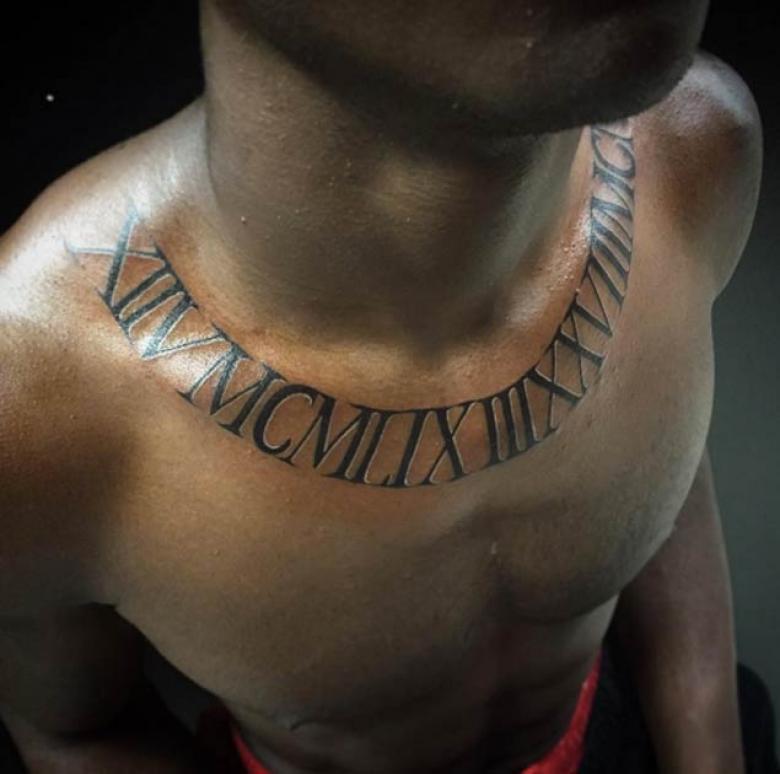

And now more about the numbers themselves. They also have types, and the tattoo can be performed using the original font. Types of digital tattoos in the form of body art can be represented by both Arabic and Roman numerals.
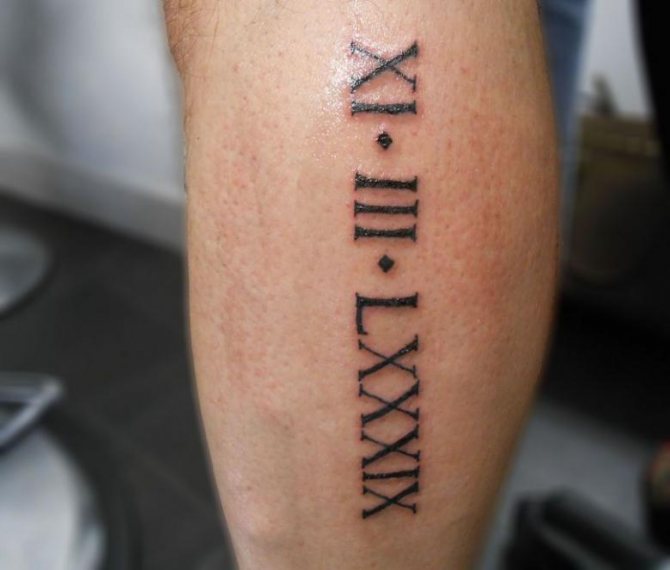

Of course, the Roman numerals look the most spectacular and are often used to put full dates, such as birthdates. If you have chosen Roman numerals for a tattoo, it is worth taking care to write them correctly and without mistakes.
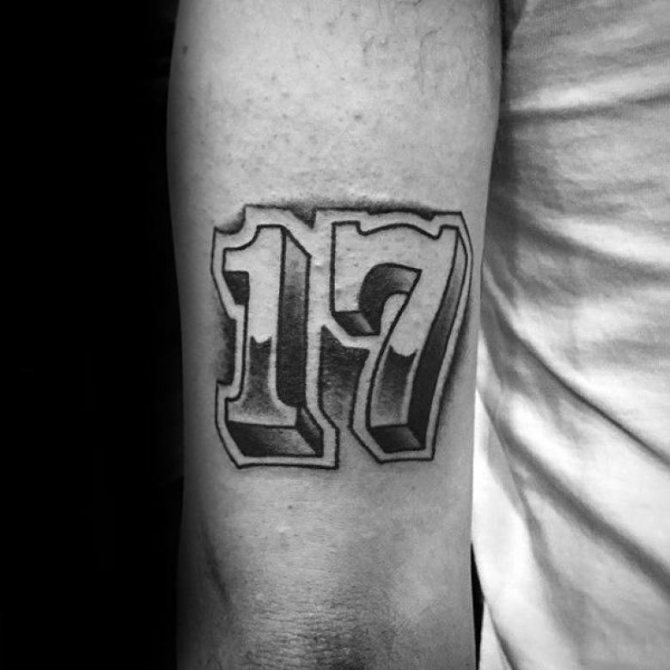

The meaning of the DNA tattoo
The macromolecule DNA is a cipher code for the inhabitants of the Earth. The main meaning of a tattoo with its image is the eternal cyclic renewal of life, the manifestation of which is the human race. The wearer of the tattoo is a modern representative of this clan who has absorbed the power, wisdom and experience of previous generations and is both a carrier and a source of clan knowledge.
Tattoo on the forearm Tattoo formulas on the arm
The DNA molecule inside the nucleus of the cell of a living organism represents a double helix with a rotational motion. Such form allows objects of the material world (a shell of a mollusk, a galaxy), in the process of formation or growth to increase in volume as in the sides, and upwards. Therefore, the spiral tattoo carries the meaning of the developing life energy.
The double screw of the DNA resembles a double spiral of yin and yang, uniting darkness and light, cold and heat. The two intertwined spiraling snakes of the mythical caduceus wand, which reveals secret knowledge to its owner, also symbolize the duality of the universe. The unity of opposites gives peace and death, and their conflict generates the movement of life.
"Compressed" creative energy generates the strength to take action even in the most difficult situations of life. Allowing the wearer of the spiral tattoo to win through endurance and perseverance. A successful outcome of a business meeting or a romantic date, self-confidence, popularity and respect of people whose opinion is dear, protection against negativity - all this is given simply by the shape of the molecule.
Supplementing the above benefits with the support of the power of the genus, constant renewal and refinement. We will get a talisman, which due to regular feeding by the energy of creation allows the owner of the tattoo to succeed in any activity in which he will show interest. The single genetic code of all inhabitants of our planet implies a single common ancestor.
Tattoo on the forearm
This means that the owner of the DNA tattoo can appeal to any knowledge that exists on Earth as a kin experience. The tattoo is suitable regardless of sex for people accustomed to look at the world from an unconventional angle, for those who strive to learn new things, achieve goals and ponder on the meaning of life and their mission. The body of such a person Tattoo DNA symbolizes the never-ending chain of victories of the human mind.
Meaning for women
DNA tattoo in the lower abdomen of a girl means that its owner seeks to discover her sensuality or to become a mother. Drawing in the solar plexus area is suitable for a woman - a leader or one who dreams to rule in the work team and family. The spiral tattoo, applied to the heart area, says that its owner - a creative person.
TATTOO HISTORY
The culture of tattooing was formed on all continents and differed at different stages of society. The safest first pigment for tattoos was wood ash. There is even a legend of how a hunter from an ancient tribe got soot from a fire in his wounds, from which a dark scar was left on the skin. This is the story of the origin of the tattoo, which means bravery and heroism.
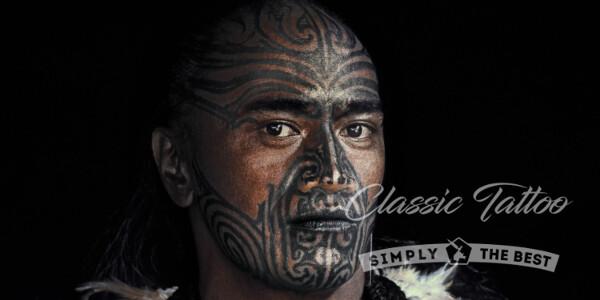

Since ancient times, people have invested in symbols of great significance. In primitive society, tribesmen believed that the world was created by the gods, and considered it necessary to constantly confirm loyalty to the sacred values of the tribe. Tattoos or scars were applied to the body at the time of significant events: the birth of a child, marriage or the death of a relative. The symbols on the body were an indicator of high status, a kind of passport.
In civilized society, with the advent of writing, tattoos were discouraged and were inscribed as a stigma on the bodies of slaves and criminals.
CHRONOLOGY
The history of the tattoo begins on mummified bodies more than 5,000 years old found in archaeological excavations in Europe. Ancient Egyptians, and later also inhabitants of Greece or Persia, massively applied permanent symbols on the skin. Later, unified signs appeared, tattoos were made to identify a person's occupation: carpenter, sailor, blacksmith.
In the Chinese province of Sun Jian mass graves of people with tattoos dating back about 4000 years were found. The most common symbol is the sun in different interpretations.
The remains of the Scythian tribes were also found on the Ukok Plateau in the Altai Territory. The "animal" style of depictions prevailed there: pictures of animals of the feline, ungulate and cold-blooded families and hunting scenes. It was a sacred "text" that was supposed to make a person as agile and strong as the beast depicted on the skin.
The older the culture of tattooing becomes, the more styles appear, the higher the quality of padding. Several types of tattoos can be combined on the body at the same time.
| Tattoo style | Features, description of tattoos | Main themes |
| Minimalism | Small amount of colors, small size and geometric shapes | Symbols, book illustrations, animals |
| Realism | Complete repetition on the skin of the image from a sketch | Photos of celebrities or loved ones, animals, landscapes |
| Oriental | Oriental motifs, mostly in color | Dragons, geisha, flora and fauna, samurai |
| Chicano | Religious and criminal scenes | Skulls, weapons, maps, women, cars |
| Biomechanics | Mechanical parts, more often depicted on arms and legs | Gears, bolts, springs |
| Oldschool | Drawings with a thick outline and brightly colored pigment inside | Marine-themed |
| Newschool | Differs from oldskool with presence of plot and proportionality | Realistic images |
| Tribal | Geometric patterns in black or with shades of gray, a symbol of union of body and soul | Simple monochrome patterns with straight or curved lines |
| Thrash polka dot | Combination of patterns with inscriptions, made in red and black | Abstract images or photographs and newspaper font |
| Dotwork | Drawing consists of individual dots, regulated by their density | Large ornaments, less often flowers and birds |
| Traditional | Images with clear facets in black and color | Uncomplicated images |
| Watercolor | Tattoo looks like a watercolor picture without outlines | Vegetation, animals, geometry and abstraction in bright colors |
Color realism is considered the most difficult to achieve. It can be qualitatively stuffed by only a few masters.
Instasamka tattoos on the legs
On the left leg Instasamky printed a long text in English: "Want it fast. Want it hard. Don't need monin. Don't need fame. I just want to make a change." In one of her interviews Zoteeva said that this postulate became her guide in life. The essence of which is that she does not need anything. She wants to make changes herself. Most likely in her personal life.
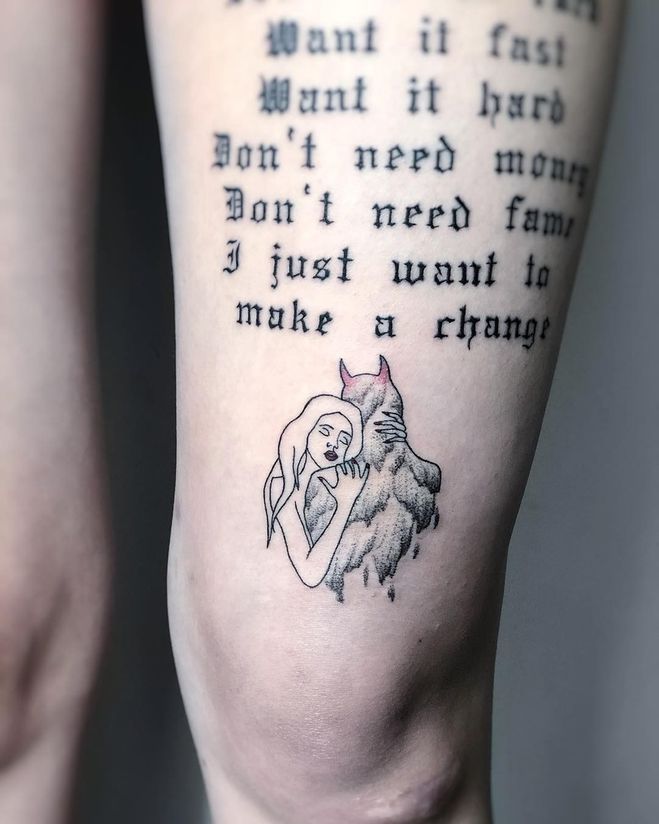

Underneath the text, a beautiful girl and a devil hug. The tattoo is quite symbolic. It's not hard to guess that the pretty girl is Instasamka. The entity with horns speaks of guile, envy, disunity, discord. The devil in the drawing symbolizes temptation, temptation, sinfulness.
According to the oldest interpretation, Satan reminds us of a mistake or crime committed. There are many unfortunate acts in everyone's life, and media personalities are no exception.
